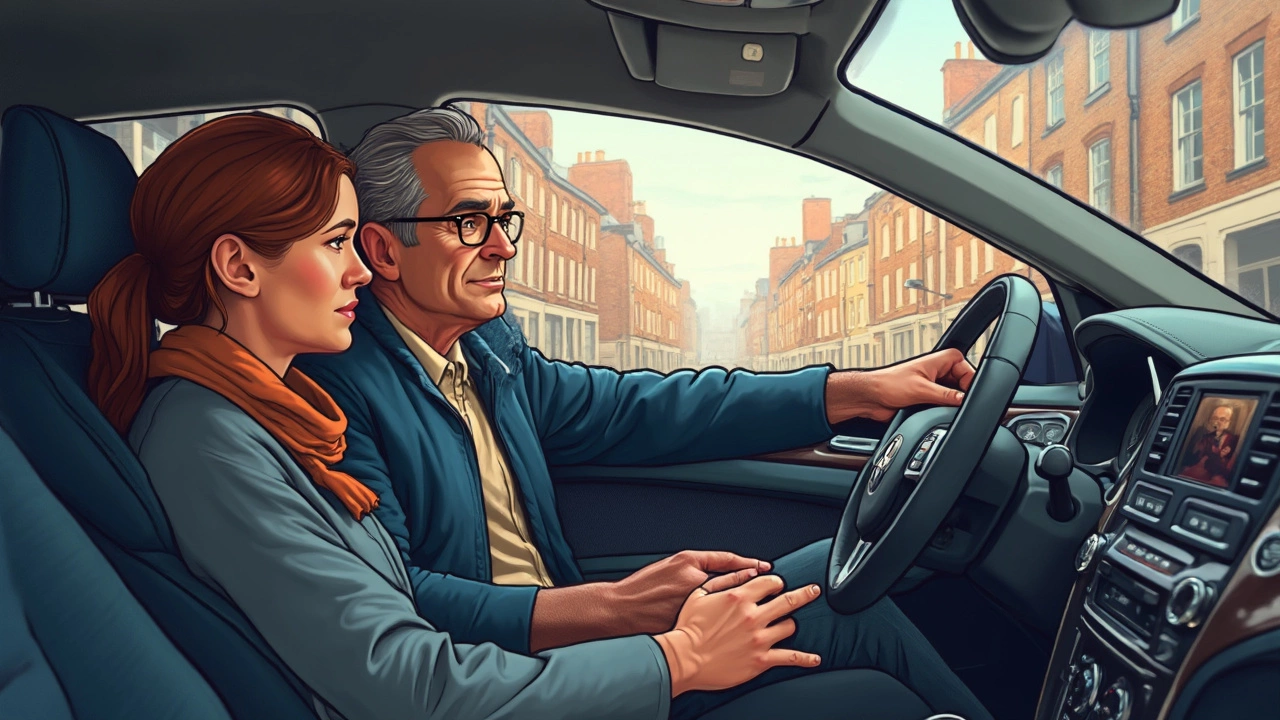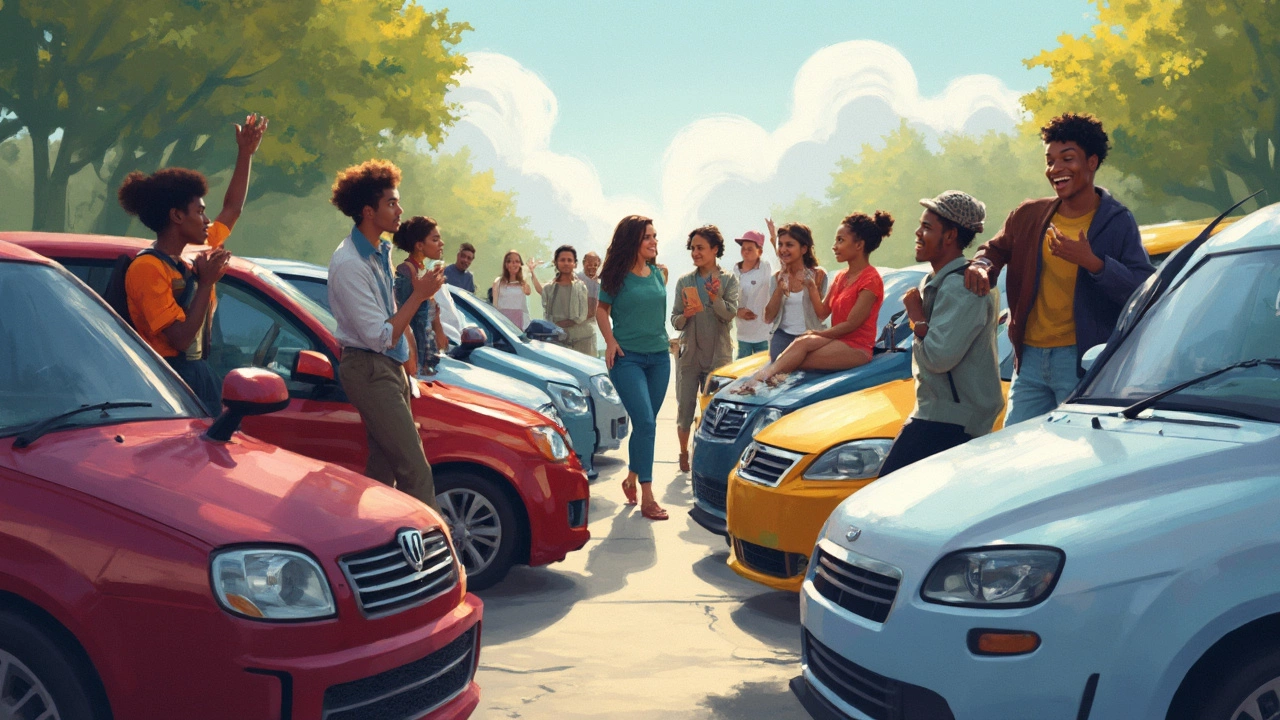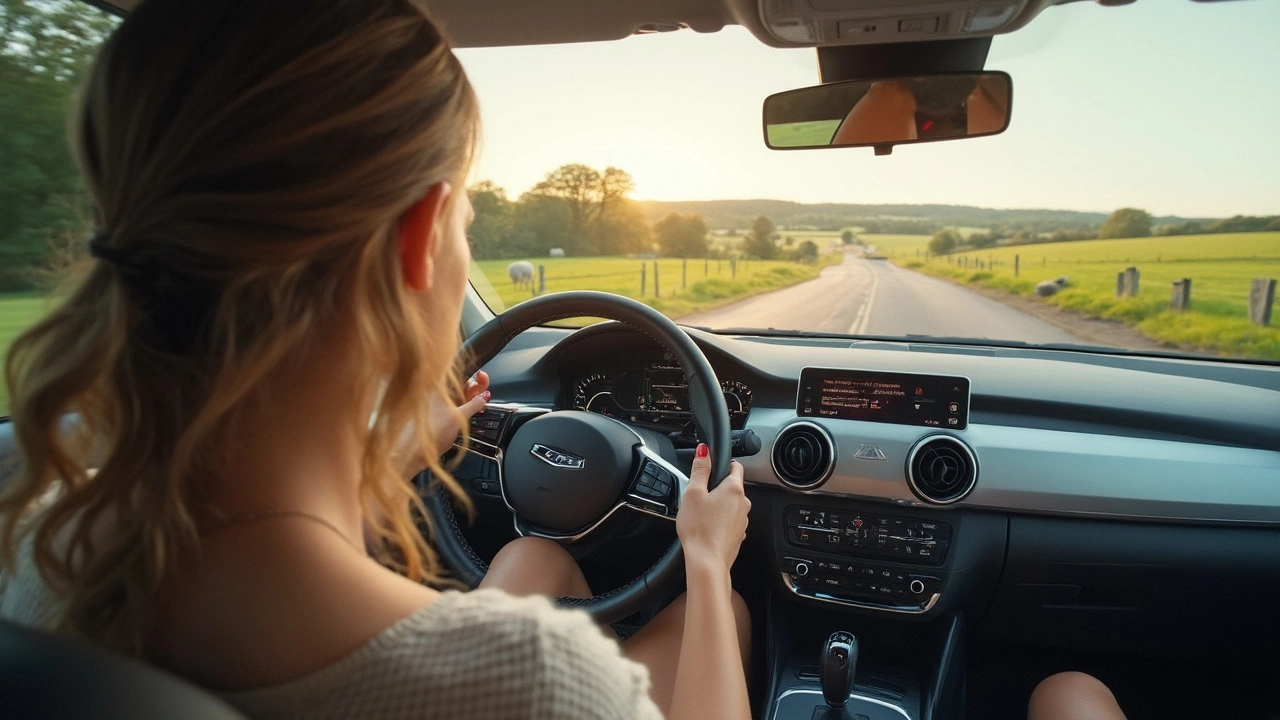So you’re thinking about learning to drive an automatic car? Great choice! If you're worried about the challenge, let's talk it through. Compared to manual cars, automatics can be like a ride in the park. No need to dance with the clutch or find that elusive biting point.
Most people find that automatic cars simplify the process since they handle gear changes for you. You just focus on steering and those tricky things called traffic rules. But hey, who said driving had to be rocket science?
One cool thing about automatics is that learners often feel more relaxed since they don't have to juggle as much. This can be a real confidence booster, which is crucial when you’re starting out. The road is enough to focus on without a gear stick reminding you of your 'boo-boos.'
Stick around for some pearls of wisdom on navigating through your automatic learning journey. It's not just about going from A to B, but doing it with ease and maybe even a little style. Ready to roll?
- Understanding Automatic Driving
- The Learning Curve
- Common Misconceptions
- Tips for Beginners
- Advanced Skills for Automatic Driving
Understanding Automatic Driving
Driving an automatic car is sort of like having a loyal assistant. The car takes care of the gear changes, so you can zero in on more important things—like not missing that stop sign or avoiding the unusually deep pothole on Main Street.
At the heart of it, an automatic transmission is built to do what a driver would normally do with a manual gearbox, but without manual intervention. It uses a torque converter instead of a clutch to manage the gear changes. This setup not only handles the shifting but usually does it more smoothly, which is great for city driving.
How It Works
Think of the automatic transmission as your in-car gear chief. When you drive, sensors and complex electronics decide the best time to shift gears based on speed and engine load. Ever notice that little bit of lag when accelerating? That's the tools at work, not you lagging behind.
An automatic car typically has gear settings labeled 'P', 'R', 'N', and 'D' on the gear selector:
- P: Park – Keeps your car locked in place.
- R: Reverse – For, well, moving backward.
- N: Neutral – Disengages gears, letting the wheels spin freely.
- D: Drive – For moving forward.
Automation Benefits
One of the biggest perks of automatic cars is the simplicity it provides during drives in stop-and-go traffic. No constant gear shifting means less fatigue for you. Also, it can make hill starts much less nerve-wracking. Forget rolling back on inclines; automatics have got your back.
These rides aren't just easier to handle; they can also be easier on gas, depending on the model. Many newer automatics come equipped with features like 'Eco Mode,' optimizing fuel efficiency during your daily commute.
The Learning Curve
So, what's the deal with learning how to drive automatic? Many people wonder if it's easier than driving a stick, and the answer is often, yes. With automatics, you're freeing yourself from the intricacies of gear shifting, allowing you to focus more on the road and less on what your left foot is doing.
Since the transmission does the hard work for you, the learning curve usually isn't as steep. You won’t be battling with gear changes or stalling at every stop sign. Sounds good, right? Here's a bit of structure on how this curve looks:
Initial Lessons
When you first start, your primary focus will be getting comfortable with the vehicle and understanding the controls. Since automatics handle the shifting, you’ll immediately dive into steering and adjusting speeds using just two pedals. A good instructor will help you master things like parking and navigating through different road conditions.
Building Confidence
As you gain confidence, the key skills to develop are observing and planning. With fewer technical distractions, you can focus on crucial driving aspects like spatial awareness and anticipation. Practicing these skills helps you react to road scenarios quickly and safely.
Here’s a simple way to look at it:
- Week 1-2: Familiarize yourself with the car's basic controls and practice braking smoothly.
- Week 3-4: Start with simple maneuvers like turns and controlled stops.
- Week 5-6: Incorporate traffic practice, understanding road signs, and highway driving as your confidence grows.
Testing Your Skills
When you're ready to take the driving test, you'll find the evaluation focuses more on your ability to drive safely and follow road rules. Automatic transmissions mean you don’t have to impress anyone with your gear-changing skills, which can be a relief for many!
Remember, though, that every new learner's experience is different. Some folks adapt quickly while others take a little more practice. That’s perfectly normal.

Common Misconceptions
When it comes to driving automatic, myths and misconceptions are as common as traffic jams on a Friday. Let's bust a few of them and clear the fog.
Automatic Cars Are Easier to Drive
Sure, learning to drive an automatic can be simpler, but 'easy' is in the eye of the beholder. Automatics do take away the gear shifting hassle, but you still need to master road sense, navigation, and handling the vehicle. Don't let the ease fool you into thinking there’s no learning curve.
Automatic Cars Are Gas Guzzlers
Back in the day, automatics had a reputation for lower fuel efficiency compared to manuals. However, with tech advancements, many automatic cars are now just as fuel-efficient, if not more, thanks to features like CVTs and dual-clutch transmissions.
Less Control with Automatic Cars
Some folks say automatics offer less driving control. While it’s true that you won't be able to control gears manually, modern automatics provide plenty of control options through paddle shifters or different driving modes. You'll be surprised at how much you can actually adapt your drive.
Automatic Driving is Less Engaging
Engagement comes from the experience, not the mechanics. Learning to drive any car—manual or automatic—should involve understanding traffic dynamics and gaining confidence on the road. Whether you find it engaging is more about your attitude than the transmission type.
In the quest for truth about automatic driving lessons, look past the old wives’ tales. With accurate information and practice, you'll find that driving automatic might just be the smooth ride you were wishing for.
| Myth | Reality |
|---|---|
| Automatics are less fuel-efficient | Modern automatics are often as efficient as manuals |
| Less driving control | Technologies like paddle shifters enhance control |
| Only for beginners | Useful for drivers of all experience levels |
Tips for Beginners
So you're embarking on your driving automatic adventure, huh? Here are some nuggets of wisdom to get you started, because let's face it, every help counts.
Start With the Basics
Understand your car’s controls before hitting the road. Know where the basic controls are: indicators, wipers, lights, and, of course, park, reverse, neutral, drive (PRND) on the gear selector. Automatics make it straightforward, but being familiar makes you more comfortable.
Find Your Zen
Relax and sit comfortably. Adjust your seat and mirrors so you have the best view. Being comfy keeps stress levels low, which is crucial when learning. Plus, you'll feel more in control.
Practice Makes Perfect
Just like mastering a new dance move, practice is key. Start in a quiet area to get the hang of accelerating, braking, and steering without worrying about traffic. Slowly build up to busier roads as your confidence grows.
Understand Braking
Learning to brake smoothly is an art. Automatics tend to coast a bit when you release the accelerator, so practice easing onto the brakes rather than slamming them at the last minute. Not only will you feel like a pro, but your passengers will thank you!
Use That Handbrake
Always use the handbrake when you stop, especially on hills. It might seem like a minor thing, but it prevents rolling and gives you peace of mind when you start moving again.
Stay Sharp
Even without worrying about gear changes, stay alert. Keep an eye out for signs, cyclists, and pedestrians. Your surroundings change quickly, and staying sharp helps you react swiftly.
Keep Learning
No one becomes a perfect driver overnight. Take lessons seriously, ask for feedback, and don’t be shy to admit when you don’t understand something. Experience builds over time.
Remember, becoming comfy with automatic driving lessons is all about patience and practice. It’s less about the car and more about you growing into a confident, competent driver. Happy driving!

Advanced Skills for Automatic Driving
Okay, you've got the basics down. Now it's time to level up and master some advanced skills in driving automatic cars. There's more to it than just cruising around.
Handling Hills Like a Pro
One thing you might notice is that automatic cars handle hills differently. Ever feel that backward roll? Don't sweat it. Engage your handbrake and gently accelerate as you lift it. Your car's built-in hill-hold feature, if it has one, can also help prevent rolling back.
Mastering Engine Braking
Unlike manuals, you can't shift down gears to slow the car. But there's something called engine braking. Switch your gear to a lower setting like 'L' or '2' when going downhill. It helps in controlling speed without overusing the brakes. Your car’s manual will guide you on which setting suits your car.
Maximizing Fuel Efficiency
Automatic cars are known for their efficiency, but you can tweak it. Use the 'Eco' mode if available. Practice gentle acceleration and smooth braking to save on gas. Keep an eye on the speedometer, as maintaining a steady pace helps too. You’ll be surprised how much a steady foot can save!
| Tip | Benefit |
|---|---|
| Use Eco Mode | Improves fuel efficiency by about 5-10% |
| Smooth Driving | Extends the life of your car’s transmission |
Getting Comfortable with Paddle Shifters
If your car has paddle shifters, it’s time to play! They allow some manual control over gear changes. It gives you a taste of manual driving without the clutch hassle. Great for overtaking or when you need a power boost quickly.
Advanced driving in automatic driving lessons isn't just about driving but controlling and maximizing your car's feature. Now stop reading and go impress some folks with your new skills!

